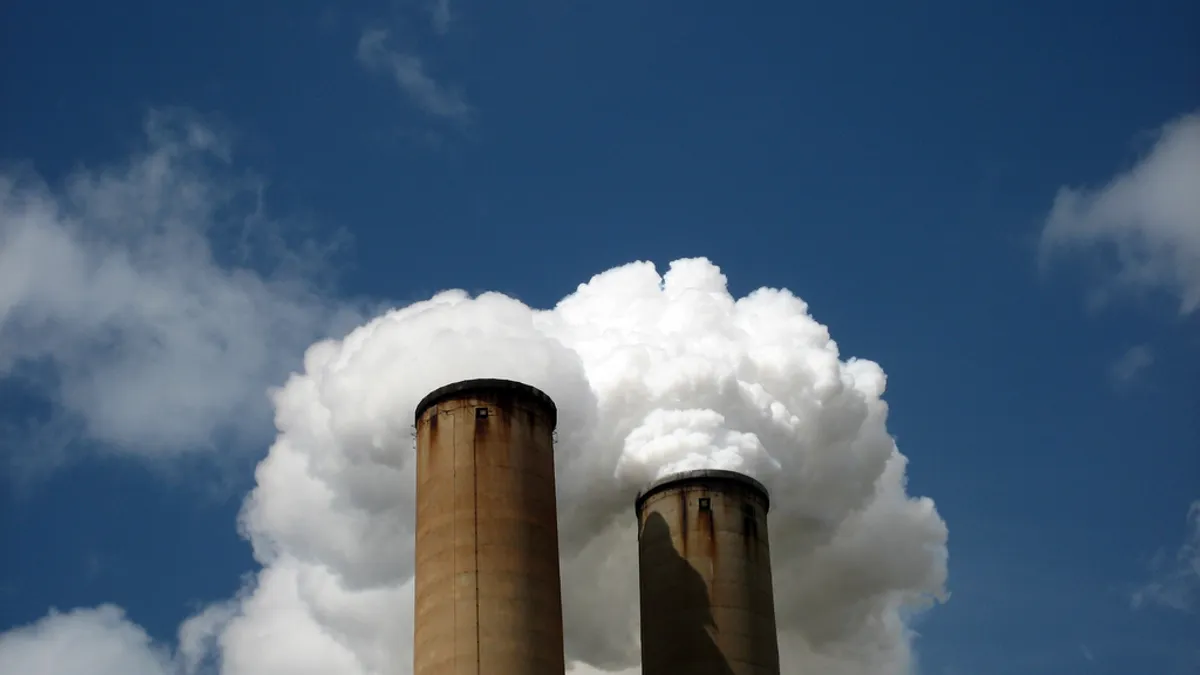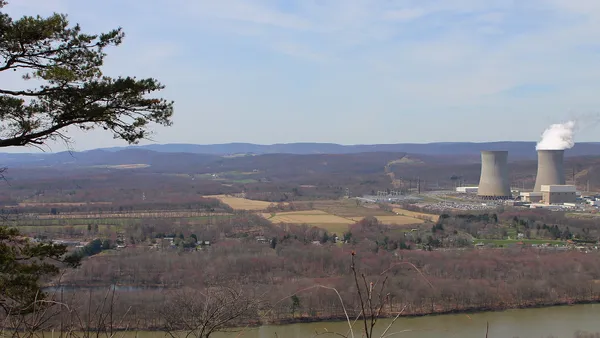Dive Brief:
- The U.S. Environmental Protection Agency on Wednesday released the final version of its updated Cross-State Air Pollution Rule, which aims to reduce power plant emissions of nitrogen oxides (NOx) across 22 states.
- The final rule aims to help states downwind from major NOx emitting sources comply with a ground-level ozone standard issued in 2008 that limits ozone pollution to 75 parts per billion. NOx pollution is a major component of ground-level ozone, which is linked to respiratory problems.
- Environmentalists had hoped EPA would set a more stringent guideline for cross-state pollution at 70 parts per billion, reflecting a benchmark set last October for in-state ozone. But the D.C. Circuit court last summer ordered the agency to re-write its cross-state standards, saying they were too broad.
Dive Insight:
A part of the Obama administration's push to clean up air pollution, the Cross-State Air Pollution Rule was originally proposed in 2011 to help address the interstate transport of ozone and other pollutants typically covered by the National Ambient Air Quality Standards within individual states.
On Sept. 7, the agency finalized those rules, issuing federal implementation plans that provide summertime budgets for NOx emissions in 22 states. The plans apply only to states that failed to submit approvable state plans under the 2008 update to the CSAPR, the agency said.
Starting in May 2017, the new rules will affect more than 2,800 generating units at 886 coal, gas and oil power plants. The states will be responsible for reducing ozone pollution, a main component in smog, to 75 ppb measured over eight hours.
Environmentalists expressed concern over the final rule, saying the agency should have chosen a stricter, 70-ppb limit that it outlined in a separate smog regulation last year.
"The final is weaker than the proposed rule from last November in that it increases the total amount of NOx the ruleallows to be emitted," Sierra Club Attorney Zachary Fabish wrote to Utility Dive. "Since the proposal already didn't go far enough, this is bad backtracking."
EPA originally proposed stronger rules, but a D.C. Circuit Court judge turned those away an initial CSAPR update last July.
In his order, Judge Brett Kavanaugh said the agency's existing-cross state pollution rules were too broad, requiring some states to cut pollution more than necessary. Kavanaugh invalidated NOx rules for 11 states and sulphur dioxide rules for four.
Despite the more lenient standards, EPA still expects the regulations will result in health and economic benefits of up to $880 million. The agency places the cost of compliance at $68 million, a figure PowerMag notes the industry is likely to contest.
Republican-controlled states and fossil fuel interests have challenged each of the Obama administration's major air pollution regulations, so a legal battle is likely. Last year, the Supreme Court upheld the EPA's Mercury and Air Toxics Standards, though it mandated some procedural changes to rulemaking, and the D.C. Circuit is set for an 'en banc' hearing on the Clean Power Plan at the end of this month.













